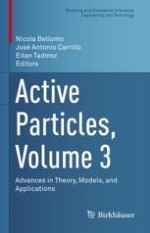This edited volume collects six surveys that present state-of-the-art results on modeling, qualitative analysis, and simulation of active matter, focusing on specific applications in the natural sciences. Following the previously published Active Particles volumes, these chapters are written by leading experts in the field and reflect the diversity of subject matter in theory and applications within an interdisciplinary framework. Topics covered include:Variability and heterogeneity in natural swarmsMultiscale aspects of the dynamics of human crowdsMathematical modeling of cell collective motion triggered by self-generated gradientsClustering dynamics on graphsRandom Batch Methods for classical and quantum interacting particle systemsThe consensus-based global optimization algorithm and its recent variantsMathematicians and other members of the scientific community interested in active matter and its many applications will find this volume to be a timely, authoritative, and valuable resource.
